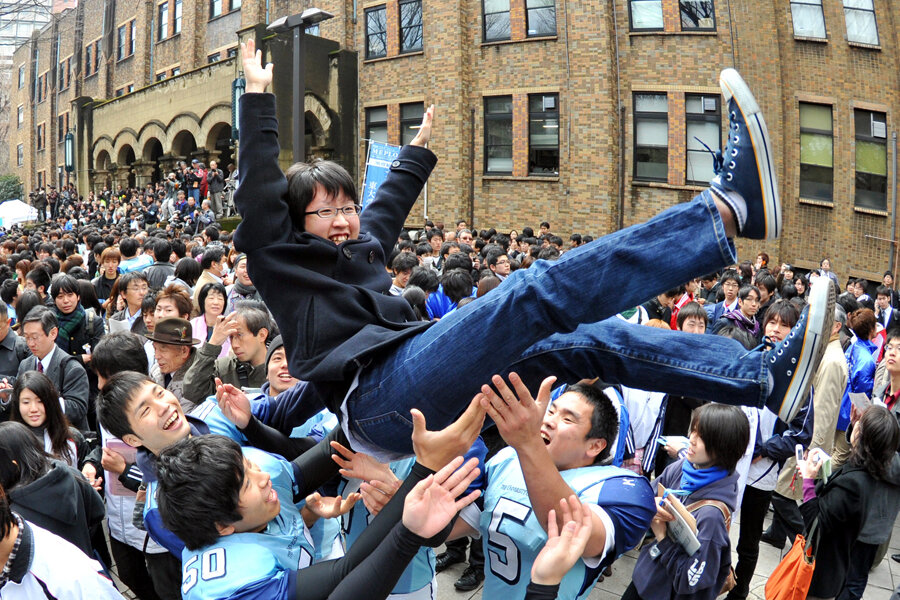Times Higher Education World rankings: Asian universities make gains
The United States and Great Britain once again dominated the Times Higher Education World University Rankings, with the California Institute of Technology retaining the top spot for the fourth year in a row.
But top-tier Asian universities showed a steady rise in the new rankings released Wednesday, a trend partly explained by increased state support. Two institutions in Asia, the University of Tokyo and the National University of Singapore, made the top 25 — up from one last year and none the year before.
East Asia now has 24 universities in the top 200, four more than last year. Institutions in China, Japan, South Korea, Singapore, and Hong Kong all made the list.
Meanwhile, US dominance in the rankings slipped a touch. While still claiming seven of the top 10, the US lost three spots in the top 200, dropping from a total of 77 to 73. Overall, 60 percent of US institutions dropped in this year’s ranking, according to Times, with an average fall of 5.34 percent.
“There is much talk of a power shift from West to East, but these new world university rankings provide hard evidence of the phenomenon,” Phil Baty, editor of the rankings, said in a statement.
The University of Tokyo was the highest-ranked Asian institution, coming in at 23rd. China claimed three of the top 200, up from two last year, with Peking University leading the way at 48th.
“East Asia's top universities continue their strong upward movement in the rankings, on the back of strong government financial support, strong leadership, and a strong commitment to excellence in higher education and research,” Mr. Baty said. “At the same time, many Western universities, in many cases starved of vital public funding, are losing ground.”
Turkey also had an impressive showing in this year’s rankings. It now boasts four universities in the top 200. The Middle East Technical University in Ankara, the county’s top-ranking institution, jumped from outside the top 200 to 85th.
Times Higher Education (THE), a UK publication, ranked the universities on 13 criteria involving teaching, research, knowledge transfer, and international outlook. Universities provide and sign off on their institutional data for use in the rankings. Given this reliance on self-reporting, any such ranking of educational institutions is highly subjective.
As a headline on the magazine’s website advises, the rankings are “an assessment tool to be used with care.”
“There is little doubt that universities, policymakers, students, and other stakeholders have responded – rationally and irrationally – to rankings’ reputed benefits,” said Ellen Hazelkorn, director of the High Education Policy Research Unit at Dublin Institute of Technology, in a statement on the magazine's website.
World’s top universities
- California Institute of Technology (US)
- Harvard University (US)
- University of Oxford (UK)
- Stanford University (US)
- University of Cambridge (UK)
- Massachusetts Institute of Technology (US)
- Princeton University (US)
- University of California — Berkeley (US)
- Imperial College London (UK)
- Yale University (US)
East Asia’s top universities
- (23) University of Tokyo (Japan)
- (25) National University of Singapore (Singapore)
- (43) University of Hong Kong (Hong Kong)
- (48) Peking University (China)
- (49) Tsinghua University (China)
- (50) Seoul National University (South Korea)
- (51) Hong Kong University of Science and Technology (Hong Kong)
- (52) Korea Advanced Institute of Science and Technology (South Korea)
- (59) Kyoto University (Japan)
- (61) Nanyang Technological University (Singapore)
The Times' annual rankings list is among the most popular in the world. Quacquarelli Symonds, a British-based higher education consulting firm, published separate rankings of world’s universities in September.





